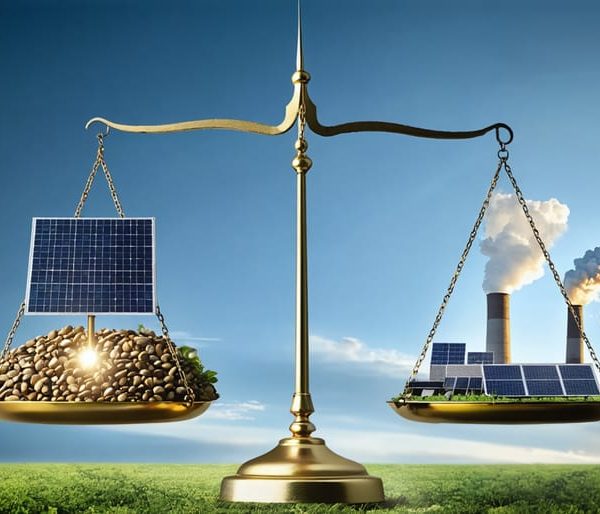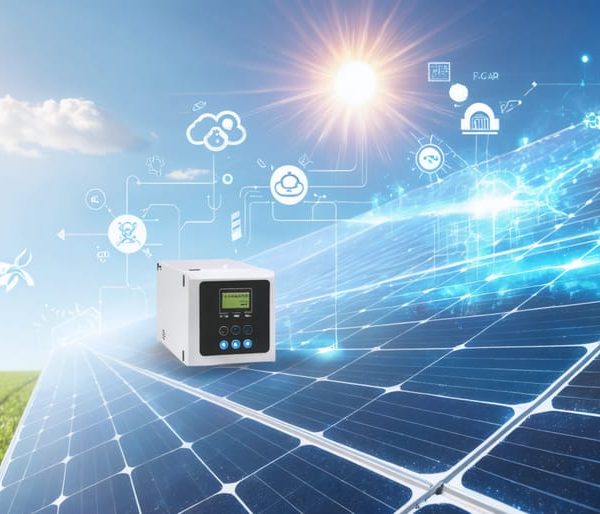Solar Power Safety: Critical Steps to Protect Your Home and Family
Solar power systems transform how we protect your home and family while embracing clean energy, but proper safety measures are essential for long-term success. Professional installation by certified technicians ensures proper grounding, correct wire sizing, and code compliance—critical factors that prevent electrical hazards and system failures. Regular maintenance inspections identify loose connections, damaged panels, or deteriorating components before they become safety risks. Modern solar installations incorporate advanced safety features like rapid shutdown systems, arc-fault protection, and monitoring technology that automatically detect and respond to potential issues.
Modern solar technology has revolutionized home energy production, combining robust safety mechanisms with efficient power generation. Understanding these safety features and maintaining them properly doesn’t just protect your investment—it ensures your renewable energy system operates reliably for decades while keeping your property and loved ones safe. Whether you’re considering solar installation or maintaining an existing system, implementing proper safety protocols is as crucial as the energy savings you’ll achieve.

Essential Safety Features of Solar Systems
Rapid Shutdown Requirements
Rapid shutdown systems are a crucial safety feature required by the National Electrical Code (NEC) for solar installations. These systems quickly reduce the voltage in your solar system’s DC wiring to safe levels during emergencies, protecting first responders and maintenance workers.
Think of rapid shutdown as an emergency brake for your solar panels. When activated, it ensures that the voltage in your system drops to 30 volts or less within 30 seconds. This requirement applies to all solar panels installed on buildings, whether residential or commercial.
You can activate rapid shutdown in several ways: through a clearly marked switch near your main electrical panel, through your inverter’s shutdown mechanism, or through specialized rapid shutdown devices installed with your panels. Some modern systems even integrate with your home’s fire alarm system for automatic activation.
To ensure compliance and safety, your solar installation must include:
– Clearly marked rapid shutdown switches
– Module-level power electronics
– System certification from a nationally recognized testing laboratory
– Proper labeling indicating the presence of a PV system with rapid shutdown capabilities
Remember, while rapid shutdown adds a small cost to your installation, it’s an investment in safety that’s absolutely worth making.
Ground Fault Protection
Ground fault protection is a crucial safety feature in solar power systems that helps prevent electrical fires and shock hazards. Think of it as a vigilant guardian that constantly monitors the flow of electricity, ready to shut down the system if it detects any dangerous electrical leaks.
When sunlight hits your solar panels, they generate direct current (DC) electricity. If this electricity finds an unintended path to the ground – perhaps through damaged wiring or water infiltration – it could create serious safety risks. Ground fault protection systems detect these abnormal current flows and immediately disconnect the power, much like how a GFCI outlet in your bathroom protects you from shock.
Modern solar installations require ground fault protection by electrical code, and it’s typically built into your solar inverter. This system includes specialized sensors and circuit breakers that activate within milliseconds of detecting a fault. Regular testing of these protective devices is essential to ensure they’re working correctly.
For maximum safety, your solar installer should verify that ground fault protection is properly configured during installation and explain how to recognize when it’s been activated.
Installation Safety Measures
Structural Requirements
Before installing solar panels, ensuring your roof’s structural integrity is crucial for both safety and system performance. A professional assessment should evaluate your roof’s age, condition, and load-bearing capacity to determine if it can support the additional weight of solar panels, which typically add 2-4 pounds per square foot.
Your roof structure must be able to handle not just the panels’ weight but also environmental factors like snow loads and wind forces. The mounting system should be properly engineered and installed using appropriate materials that resist corrosion and maintain waterproof integrity.
Key structural requirements include:
– Support beams and trusses must be in good condition
– Roof slope should typically be between 15-40 degrees
– Mounting points must align with roof rafters
– Proper flashing and weatherproofing around mounting brackets
– Adequate spacing between panels for maintenance access
– Reinforcement may be needed for older roofs
Professional installers should conduct detailed structural calculations and obtain necessary permits before installation. They’ll ensure proper attachment methods that won’t compromise your roof’s warranty or structural integrity. Regular inspections of mounting hardware and roof condition help maintain long-term safety and performance of your solar system.
Remember, investing in proper structural support now prevents costly repairs and safety issues later.
Professional Certification
When it comes to solar power installation, working with qualified installation professionals isn’t just a recommendation – it’s essential for your safety and system performance. Professional certification ensures that your solar installation meets all local building codes, electrical standards, and safety requirements.
Look for installers certified by recognized organizations such as the North American Board of Certified Energy Practitioners (NABCEP) or similar regional authorities. These certifications demonstrate that the installer has undergone rigorous training and understands current safety protocols.
Proper documentation is equally important. Your installation should come with:
– Detailed system specifications
– Warranty information
– Emergency shutdown procedures
– Maintenance schedules
– Inspection certificates
– Building permits
Keep these documents in a safe place and make digital copies for backup. They’re crucial for insurance purposes, future maintenance, and property resale value. Many utility companies and local authorities also require this documentation before approving your system for grid connection.
Remember to verify that your installer carries proper insurance coverage and can provide references from previous installations. This additional layer of protection ensures you’re working with a reputable professional who prioritizes safety and quality workmanship.

Maintenance and Monitoring Safety
Inspection Schedule
Regular safety inspections are crucial for maintaining your solar power system’s efficiency and longevity. For residential installations, conduct monthly visual checks of your panels, looking for any obvious damage, debris, or loose components. Schedule professional inspections every six months to thoroughly evaluate electrical connections, mounting hardware, and inverter performance.
Commercial installations require more frequent oversight, with quarterly professional inspections recommended. During spring and fall, pay special attention to weather-related wear and potential damage from seasonal changes. After severe weather events like hailstorms or high winds, always perform an additional inspection, even if it’s outside your regular schedule.
Create a maintenance calendar that includes:
– Monthly: Visual inspection and basic cleaning
– Quarterly: Check inverter readings and performance metrics
– Semi-annually: Professional electrical system inspection
– Annually: Comprehensive system evaluation, including roof integrity
– Every 3-5 years: Complete component assessment and potential parts replacement
Document all inspections and maintenance activities, noting any repairs or replacements. This record-keeping helps track system performance and can be valuable for warranty claims or insurance purposes.

Warning Signs
Being proactive about solar system safety means knowing what signs indicate potential problems. Keep an eye out for visible damage to solar panels, such as cracks, discoloration, or loose mounting hardware. If you notice any panels that appear to be separating from their frames or mounting brackets, this requires immediate attention.
Watch for signs of water damage around your electrical components, including rust, corrosion, or water stains. Strange noises coming from your inverter, such as buzzing or humming, could indicate electrical issues. Monitor your system’s performance through your monitoring app or display – unexpected drops in power generation might signal a safety concern.
Burnt smells, hot spots on panels, or flickering lights in your home when the solar system is operating are red flags that demand professional inspection. Check your electrical connections regularly for signs of burning, melting, or discoloration. During rainy weather, pay attention to any unusual electrical behavior or system shutdowns.
If you notice exposed wiring, damaged conduit, or loose electrical boxes, contact a certified solar technician immediately. These warning signs, when caught early, can prevent more serious safety issues from developing.
Emergency Response Protocols
When faced with a solar system emergency, staying calm and following established protocols is crucial for safety. Here’s what to do in various emergency situations:
For electrical issues or system failures:
1. Immediately shut down the system using the emergency disconnect switch
2. Keep everyone away from the solar panels and electrical equipment
3. Contact your solar installer’s emergency hotline or a certified solar technician
4. Document the issue with photos and notes if it’s safe to do so
In case of fire:
1. Evacuate the building immediately
2. Call emergency services (911)
3. Inform firefighters about your solar installation
4. Never attempt to extinguish an electrical fire with water
5. Wait for professional clearance before re-entering the building
For weather-related emergencies:
1. Monitor weather alerts and shut down the system before severe storms
2. After the weather event, inspect for visible damage from a safe distance
3. Document any damage for insurance purposes
4. Have a professional assess the system before reactivating
Keep these essential numbers readily available:
– Your solar installation company
– Local fire department
– Utility company emergency line
– Insurance provider
– Certified solar maintenance technician
Create an emergency response plan and share it with all building occupants. Post clear instructions near the main system controls and conduct periodic safety drills. Remember, your safety comes first – never attempt repairs yourself unless you’re a certified professional. Regular system maintenance and inspections can help prevent many emergency situations from occurring in the first place.
Solar power has proven to be one of the safest and most reliable forms of renewable energy when proper safety measures are followed. By adhering to professional installation standards, regular maintenance protocols, and emergency safety procedures, you can enjoy all the benefits of solar power while keeping your property and loved ones protected.
Remember to always work with certified installers, maintain proper documentation, and schedule regular system inspections. Keep emergency shutdown procedures readily accessible, and ensure all family members or building occupants understand basic solar safety protocols. Proper grounding, weatherproofing, and structural integrity checks are essential components of a safe solar installation.
As you embark on your solar journey, remember that safety isn’t just about following rules—it’s about creating a sustainable future while protecting what matters most. With the right precautions and professional guidance, solar power can provide decades of clean, safe energy for your home or business.
By implementing these safety measures and staying informed about best practices, you’re not just investing in renewable energy—you’re investing in peace of mind. Join the millions of property owners who have successfully and safely embraced solar power as their energy solution for the future.











